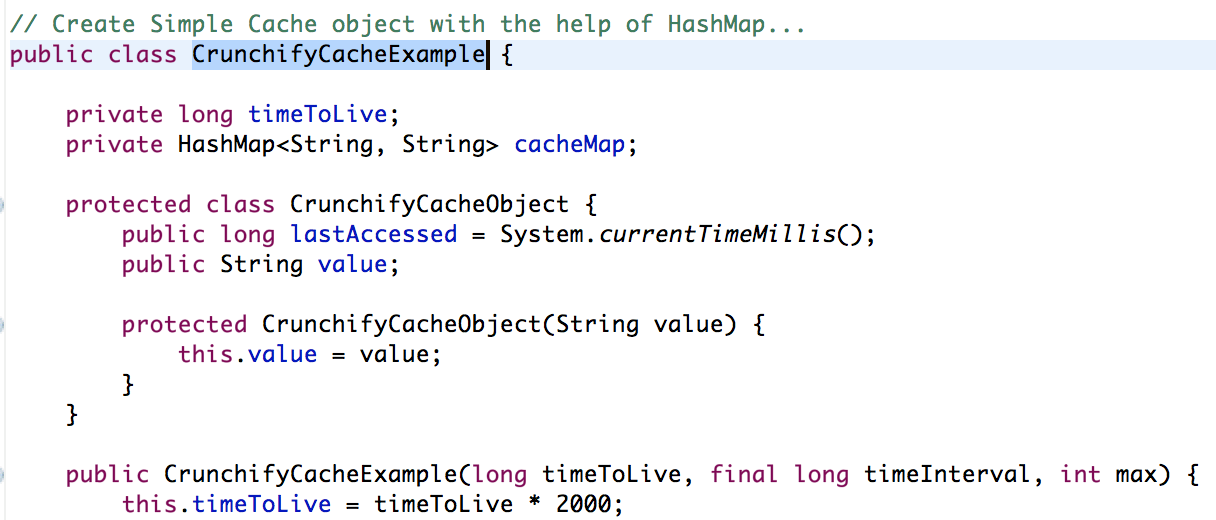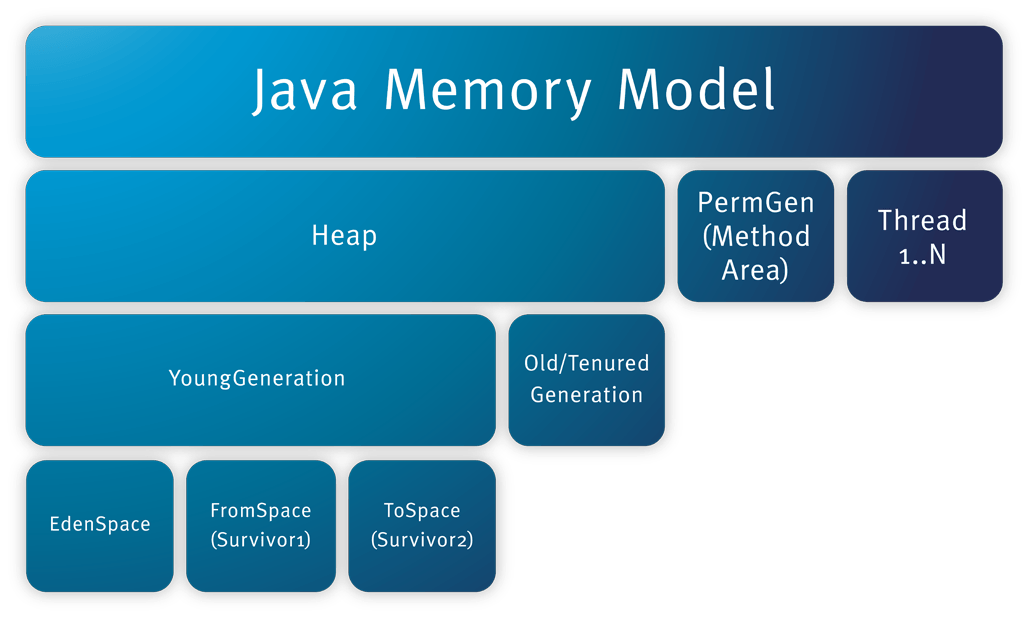Implementasikan Simple Threadsafe Cache menggunakan HashMap tanpa menggunakan Synchronized Collection
Diterbitkan: 2013-11-29
Cache adalah area memori lokal yang menyimpan salinan data yang sering diakses yang mahal untuk didapatkan atau dihitung. Contoh data tersebut mencakup hasil kueri ke database, file disk, atau laporan.
Berikut adalah Contoh Java sederhana yang merupakan Threadsafe menggunakan HashMap tanpa menggunakan Koleksi yang Disinkronkan.
|
1 2 3 4 5 6 7 8 9 10 11 12 13 14 15 16 17 18 19 20 21 22 23 24 25 26 27 28 29 30 31 32 33 34 35 36 37 38 39 40 41 42 43 44 45 46 47 48 49 50 51 52 53 54 55 56 57 58 59 60 61 62 63 64 65 66 67 68 69 70 71 72 73 74 75 76 77 78 79 80 81 82 83 84 85 86 87 88 89 90 91 92 93 94 95 96 97 98 99 100 101 102 103 104 105 106 107 108 109 110 111 112 113 114 115 116 117 |
package com . crunchify . tutorials ; import java . util . ArrayList ; import java . util . HashMap ; import java . util . Iterator ; import java . util . Map . Entry ; /** * @author Crunchify.com * */ // Create Simple Cache object with the help of HashMap... public class CrunchifyCacheExample < K , T > { private long timeToLive ; private HashMap < K , T > cacheMap ; protected class CrunchifyCacheObject { public long lastAccessed = System . currentTimeMillis ( ) ; public String value ; protected CrunchifyCacheObject ( String value ) { this . value = value ; } } public CrunchifyCacheExample ( long timeToLive , final long timeInterval , int max ) { this . timeToLive = timeToLive * 2000 ; cacheMap = new HashMap < K , T > ( max ) ; if ( timeToLive > 0 && timeInterval > 0) { Thread t = new Thread(new Runnable() { public void run() { while (true) { try { Thread.sleep(timeInterval * 1000); } catch ( InterruptedException ex ) { } } } } ) ; t . setDaemon ( true ) ; t . start ( ) ; } } // PUT method public void put ( K key , T value ) { synchronized ( cacheMap ) { cacheMap . put ( key , value ) ; } } // GET method @SuppressWarnings ( "unchecked" ) public T get ( K key ) { synchronized ( cacheMap ) { CrunchifyCacheObject c = ( CrunchifyCacheObject ) cacheMap . get ( key ) ; if ( c == null ) return null ; else { c . lastAccessed = System . currentTimeMillis ( ) ; return ( T ) c . value ; } } } // REMOVE method public void remove ( String key ) { synchronized ( cacheMap ) { cacheMap . remove ( key ) ; } } // Get Cache Objects Size() public int size ( ) { synchronized ( cacheMap ) { return cacheMap . size ( ) ; } } // CLEANUP method public void cleanup ( ) { long now = System . currentTimeMillis ( ) ; ArrayList <String> deleteKey = null ; synchronized ( cacheMap ) { Iterator <? > itr = cacheMap . entrySet ( ) . iterator ( ) ; deleteKey = new ArrayList < String > ( ( cacheMap . size ( ) / 2 ) + 1 ) ; CrunchifyCacheObject c = null ; while ( itr . hasNext ( ) ) { String key = ( String ) itr . next ( ) ; c = ( CrunchifyCacheObject ) ( ( Entry <? , ?> ) itr ) . getValue ( ) ; if ( c ! = null && (now > (timeToLive + c.lastAccessed))) { deleteKey.add(key); } } } for ( String key : deleteKey ) { synchronized ( cacheMap ) { cacheMap . remove ( key ) ; } Thread . yield ( ) ; } } } |
Beberapa Contoh Java lainnya yang mungkin ingin Anda lihat.

Bonus: Detail Model Memori Java:

